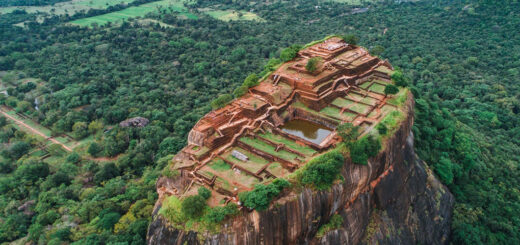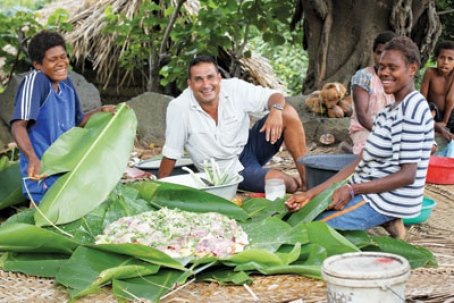No. 11
by Jetwing ·
Colombo is full of fascinating secrets and travel writer Juliet Coombe was amazed to discover a Bawa gem right in the middle of a city that is fast becoming Asia’s most exciting capital to pay a visit Bawa’s Sri Lanka’s leading architects best kept secret: No.11, 33rd Lane, off Bagatelle Road in Colombo 03, Bawa’s private home and office from 1958 – 1970 it is made up of four properties turned into one.
Colombo is full of fascinating secrets and travel writer Juliet Coombe was amazed to discover a Bawa gem right in the middle of a city that is fast becoming Asia’s most exciting capital to pay a visit Bawa’s Sri Lanka’s leading architects best kept secret: No.11, 33rd Lane, off Bagatelle Road in Colombo 03, Bawa’s private home and office from 1958 – 1970 it is made up of four properties turned into one. This was his base in the capital after returning from being a lawyer in London. Here wandering from house to house he came up with some of Sri Lanka’s most innovative architectural pieces like the current Parliament building, which was originally an island that belonged to the Lion of Kotte.

No 11 is on the exterior, a very ordinary looking property that could easily be missed, stuck in the corner of what was once a cul de sac. Now a lovely residential area in Kolpetty this charming inside out house seems in some ways more like a gallery space with its long interchanging corridors. The front door sets the scene with its wonderful Sun god etched into it by Sri Lankas premiere artist Laki Senanayake, giving one a glimpse of the treat that lies inside.
From the moment you step through the doors acid etched glass doorway the view with its magnificent Jaffna lion at the end of the long regal style corridor will simply take your breath away. Starting with the open plan garage complete with his last car, a black and white vintage Rolls Royce sets the tone of walkway, which is equivalent to Versailles in France in simplicity and grandeur. Thanks to the Bawa Trust, you now can gain access into his greatest work of art from Monday to Friday 9 to 5pm, except on public holidays. The country’s elite, for whom he built hotels, houses and businesses, were the only ones who knew where Bawa’s house was. Hidden from view the place is full of mystery with its labyrinth of rooms and courtyards, each with a springing of personal belongings that give you small vinyets into this architectural enigma’s life.
The play on your mind and senses begins almost immediately as you approach the door and ring the bell. It stands tall and dark, almost as if taken from a house in London, with its mail slot plated in gold, at the bottom of the door. There doesn’t seem to be a proper handle though and it looks deceptively likes its open, so reach out and pull it. It is at this point that you realise this is no ordinary door. Behind it is a wall with a mailbox carved into it along with the hidden garbage can storage area. While you stand there with a bamboozled look on your face, the caretaker pulls back the real door, which is a priceless Laki Senanayake work or art. This combination of these two once in a lifetime masters of their trade yielded the awe-inspiring central staircase as the Jetwing Lighthouse Hotel in Galle. Renowned Australian artist Donald Friend painted one of the first doors you find as you walk in.
As you look through the door you face the long corridor that runs into the distance and at the end which is a stone sculpture of a horse head. Once you set foot through the door, you enter the garage, which is part of the front of the house, which in the time it was built was a rare architectural feature to have an open garage.
Inside the open garage is a 1950’s white bodied, black canopied, Rolls Royce and the other a white Mercedes Benz from the same era. The house was bought by Bawa in 1958 and was the third in a row of small houses. He converted it into a pied-à-terre with living room, bedroom, tiny kitchen and room for a servant and when the fourth bungalow became vacant this was colonised to serve as dining room and second living room. It was over the next ten years that the remaining bungalows were acquired and added into the composition and the first in the row was demolished and replaced by a four-storey tower. The final result is an introspective labyrinth of rooms and garden courts, which together create the illusion of limitless space. Words like inside and outside, lose all meaning: here are rooms without roofs and roofs without walls, all connected by a complex matrix of axes and internal vistas. And something interesting there is that an entire 45 acres behind where the house is used to be the Bawa family’s ancestral property.
The completed house is a unique insight into the architects’ tastes and how his designs evolved over time. There were no boundaries or interferences as there were no external preferences or requirements – just an endless materialisation of his imagination. To the die-hard Bawa fans, this indeed is heavenly gem of a location. This doesn’t look like an ornamental house where everything has been propped up symmetrically, instead looks like one where someone actually lived in it. If you’ve ever gone white water rafting, you will be familiar with the thrill of going down a stepped cascade where you go down one waterfall and then prepare for the excitement that waits at the next. Walking through the Bawa house is almost the same. As you approach the next door or opening or end of a wall into a space, there is an intense rise in excitement as you anticipate the splendor the space hold. A quirky discovery was an old fashioned lift tucked away unnoticed behind a metal door.
Throughout the entire house, in every corner, room, splash of interior design, is an element of the sublime architectural brilliance of Geoffrey Bawa that is seen in countless structures around the country and has inspired so many other great architectural artistes. A visit to the house is timeless and is something you will remember, whether you are an avid architecture student or just passing by. The house is taken care of by the Bawa Trust that also manages his other properties including the famous Lunuganga.
Source: http://www.nation.lk/edition/business-tbl/item/1963-no-11





